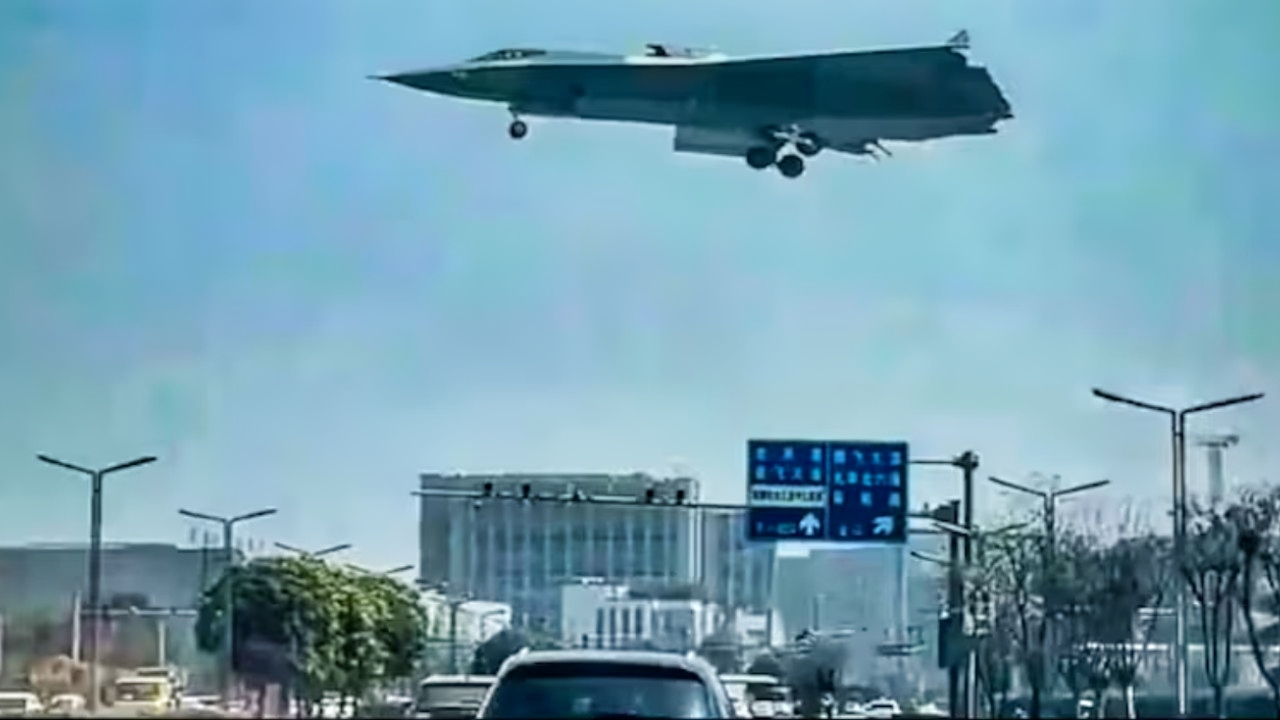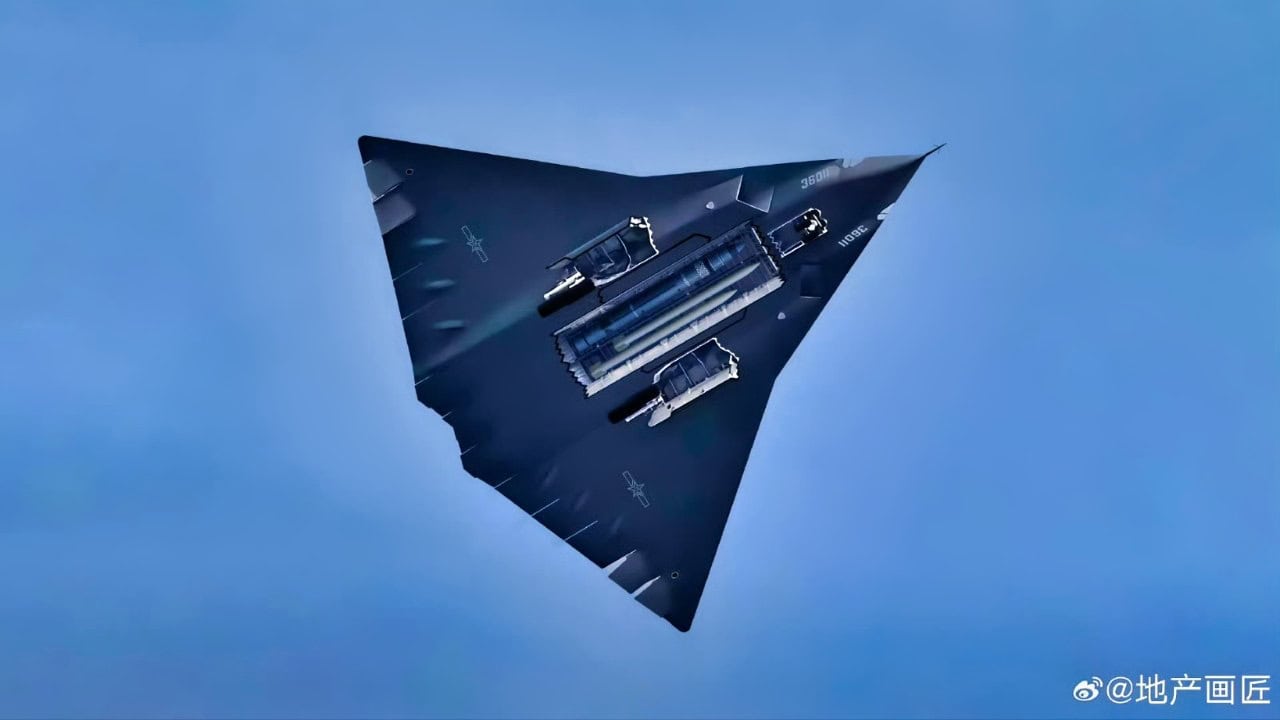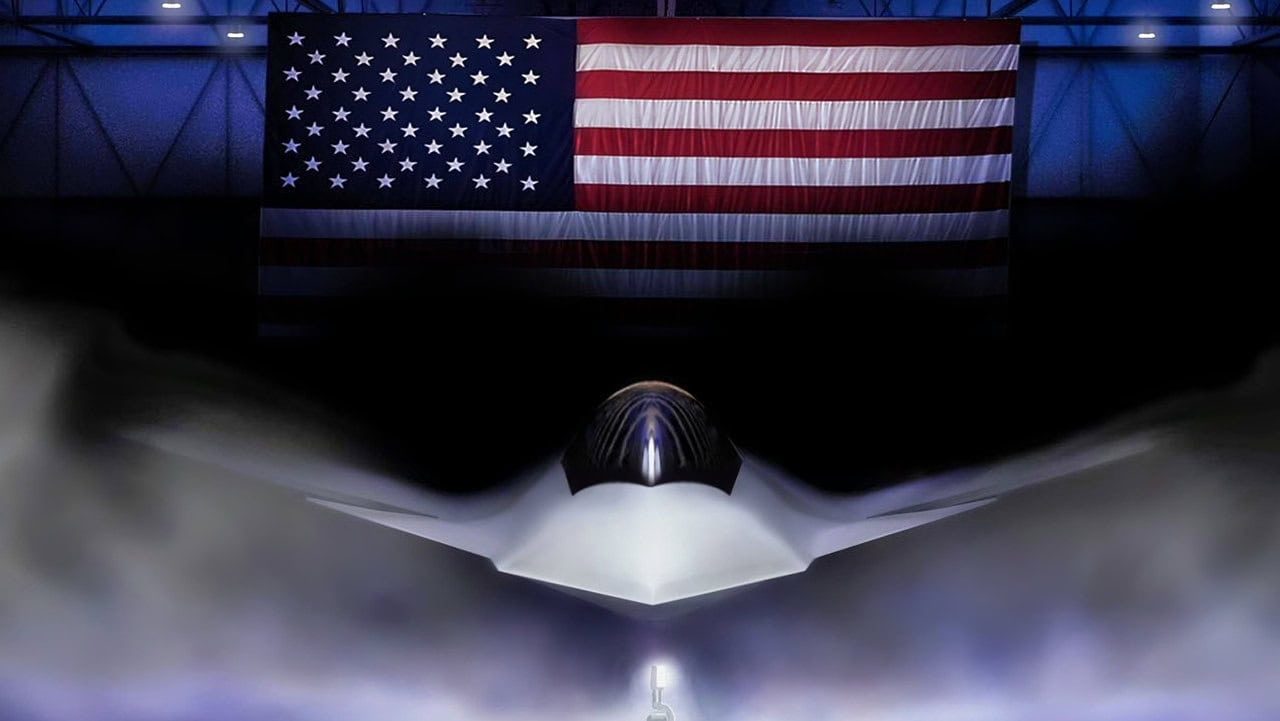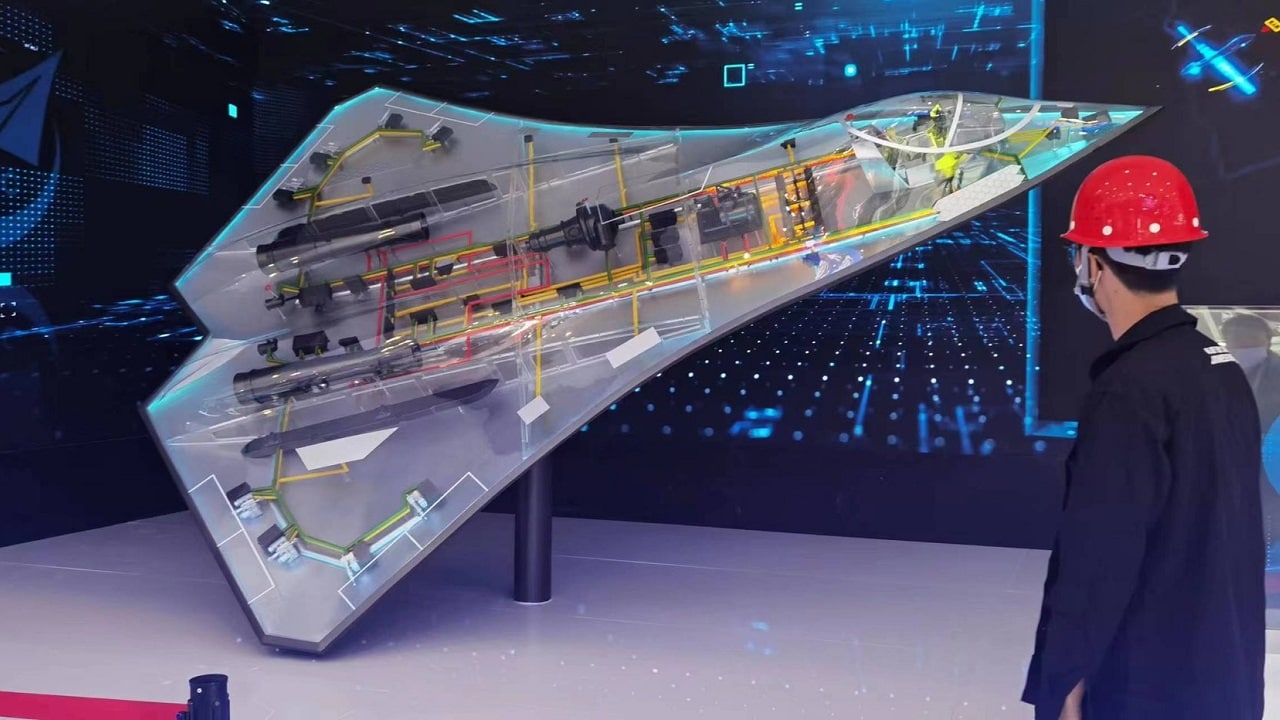As China continues to test its future sixth-generation fighters, some incredible photos and videos are breaking over the internet. Assuming they are real, they offer an incredibly intriguing look at the planned aircraft.
Recently published shots appear to show aircraft flying over a highway near the runway of the Chengdu Aircraft Industry Group, the factory in Sichuan Province where a new sixth-generation jet is reportedly being tested.

J-50 Fighter from the Road. Image Credit: Creative Commons/Screenshot.
Both Defence 360 and TWZ have conducted in-depth analyses of the aircraft’s apparent features.
Defence 360 analyzes the purported J-36’s sleek blended wing-body design, triple-engine layout, dual ETOS sensor suite, S-shaped air intakes, internal weapons bays, and advanced stealth nozzle serrations.
The publication believes that the dual ETOS and AESA radar arrays provide unparalleled situational awareness. It also examines an avionics backbone that might support networked warfare through secure datalinks.
A Clearer Picture of the Chengdu J-36
The Chengdu J-36 is under development to join China’s fleet of stealth fighters. It has been spotted five times recently. As a triple-engine, tailless flying wing, the fighter is thought to have excellent avionics. The J-36 is expected to have great thrust and a high ceiling, along with exceptional speed for a stealth fighter jet.

J-36 or JH-XX from China. Screenshot for Chinese Social Media.
However, the People’s Liberation Army (PLA) hasn’t publicly acknowledged the existence of the J-36, nor of another reported new fighter, the J-50.
The design layout eliminates vertical stabilizers, significantly reducing the aircraft’s radar cross-section and enhancing its stealth capabilities. Advanced fly-by-wire flight control systems support the tailless design.
This reduces drag, improving fuel efficiency and operational range, while increasing stability. These features would make the J-36 well-suited for long-duration missions and high-speed dogfights against enemy fighters. Additionally, its delta-wing shape contributes to exceptional maneuverability at high speeds, a critical attribute for modern air dogfighting.
Three Engines Are Unique In the Modern Age:
The aircraft’s intakes are positioned on top of the fuselage and along its sides, which is a unique tri-engine configuration. David Cenciotti, a former Italian Air Force officer and an aviation expert, said, “The trijet engine arrangement, with two engine intakes under the wings and a dorsally-mounted intake behind the cockpit, is a departure from conventional twin-engine setups seen in many contemporary fighters. This configuration may offer advantages in terms of thrust and redundancy.”
The J-36 is reportedly capable of achieving a maximum envelope speed of Mach 2.5, making it a high-speed platform suitable for air superiority and strike missions. While this increases its power and speed, it also increases complexity and fuel consumption.

F-47 Fighter from U.S. Air Force.
However, TWZ’s attention was drawn to the engine’s exhausts.
“This is a clear low-observable play both for radar and infrared signature management. Recessing the engine exhaust before the aircraft’s upper trailing edge is a classic low-observable design element that Northrop largely pioneered with Tacit Blue, B-2 Spirit, and YF-23.
“The ejected exhaust is spread out and has the potential to be actively cooled by this upper deck area. Above all else, this provides very limited line-of-sight to the engine exhausts themselves, which helps significantly in minimizing infrared signature, as well as radar cross-section, from most aspects.”
Weapons Bays
The J-36 has internal weapons bays that are expected to be able to carry a significant amount of ordnance. It will likely carry long-range strike missiles that are nuclear-capable, and it could serve as a drone mothership to control a flight of loyal wingman combat drones for better electronic warfare capabilities.
One photo that revealed the cockpit in the greatest detail yet seen, according to an aviation expert, showed two Heads-Up Displays on the J-36. This supports earlier rumors that the J-36 will be a two-pilot aircraft.
Timing Is Everything, For China Says Expert:
“What is perhaps more interesting is that China decided to make these test flights public, and the timing of those releases,” Kelly Grieco, a senior fellow at the Stimson Center, told the South China Morning Post. “Coming on the heels of [Donald] Trump’s election win, these public demonstrations seem an attempt to signal to Washington that China is a modern military power.”
Grieco noted that the apparent use of three engines might compensate for the lack of a powerful single engine, like the WS-15, which is still maturing.
J-50 Photos, Show More Detail Than Before
The other reported future sixth-generation aircraft, unveiled on Chairman Mao’s birthday, December 26, is the J-50, built by the Shenyang Aircraft Corporation. It features intriguing rotating wingtips that ostensibly improve in-flight stability.
Another intriguing feature is that a bay of some kind, with a pronounced bulge at the front, is now plainly visible on at least the right side of the fuselage, behind the air intake. It is also positioned right in front of the central landing bay on that side of the aircraft.
It seems rather small to hold any kind of armament, so its purpose remains unclear. The J-20 has a similar bulge.
The J-50’s exhausts are thrust-vectoring types, very similar to the U.S. F-22 Raptor’s arrangement. This configuration would balance low observability, performance, agility, and especially stability, when considering the inherent instability of a tailless aircraft.
About the Author:
Steve Balestrieri is a 19FortyFive National Security Columnist. He served as a US Army Special Forces NCO and Warrant Officer. In addition to writing for 19FortyFive, he covers the NFL for PatsFans.com and is a member of the Pro Football Writers of America (PFWA). His work was regularly featured in many military publications.

